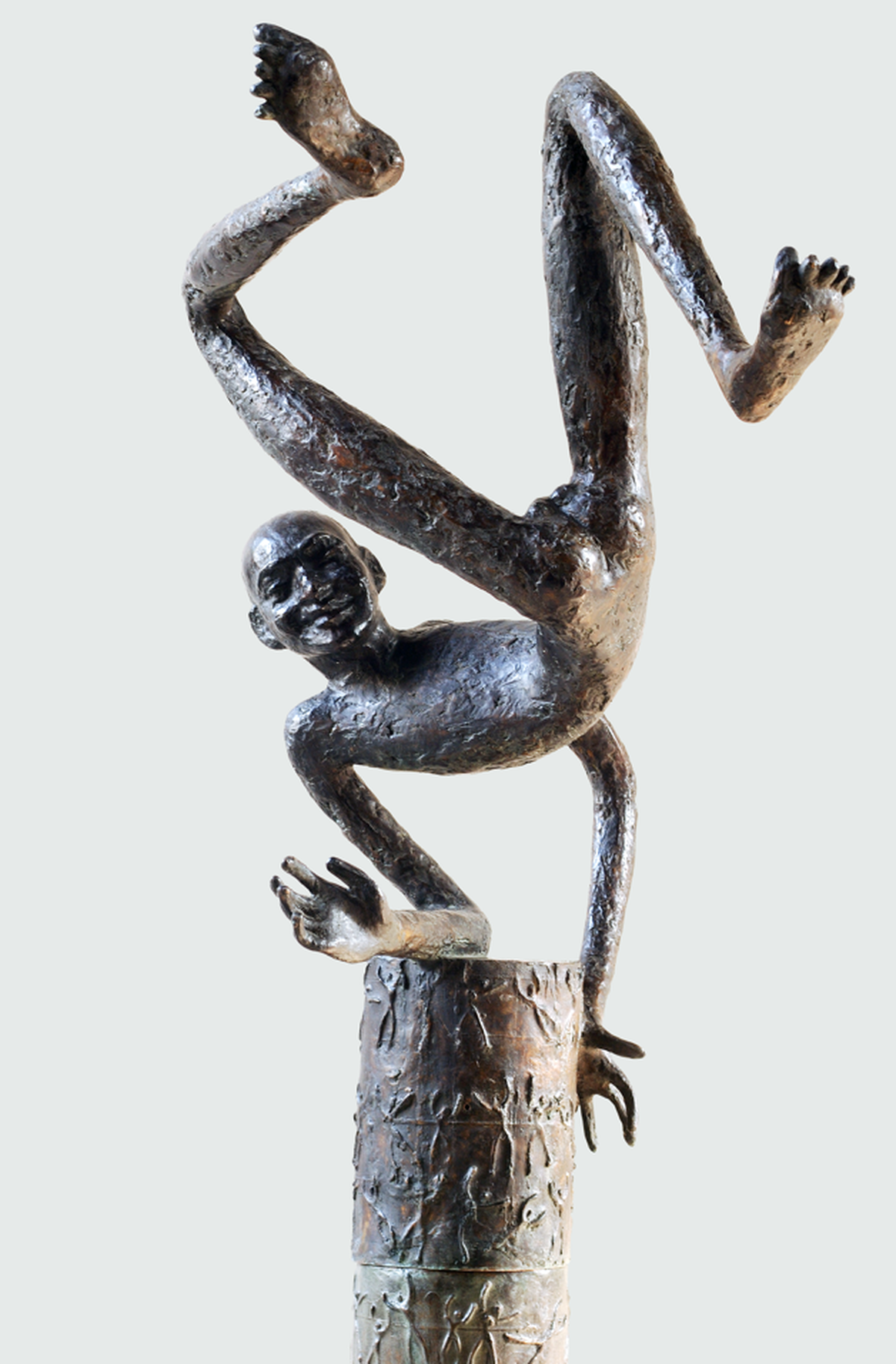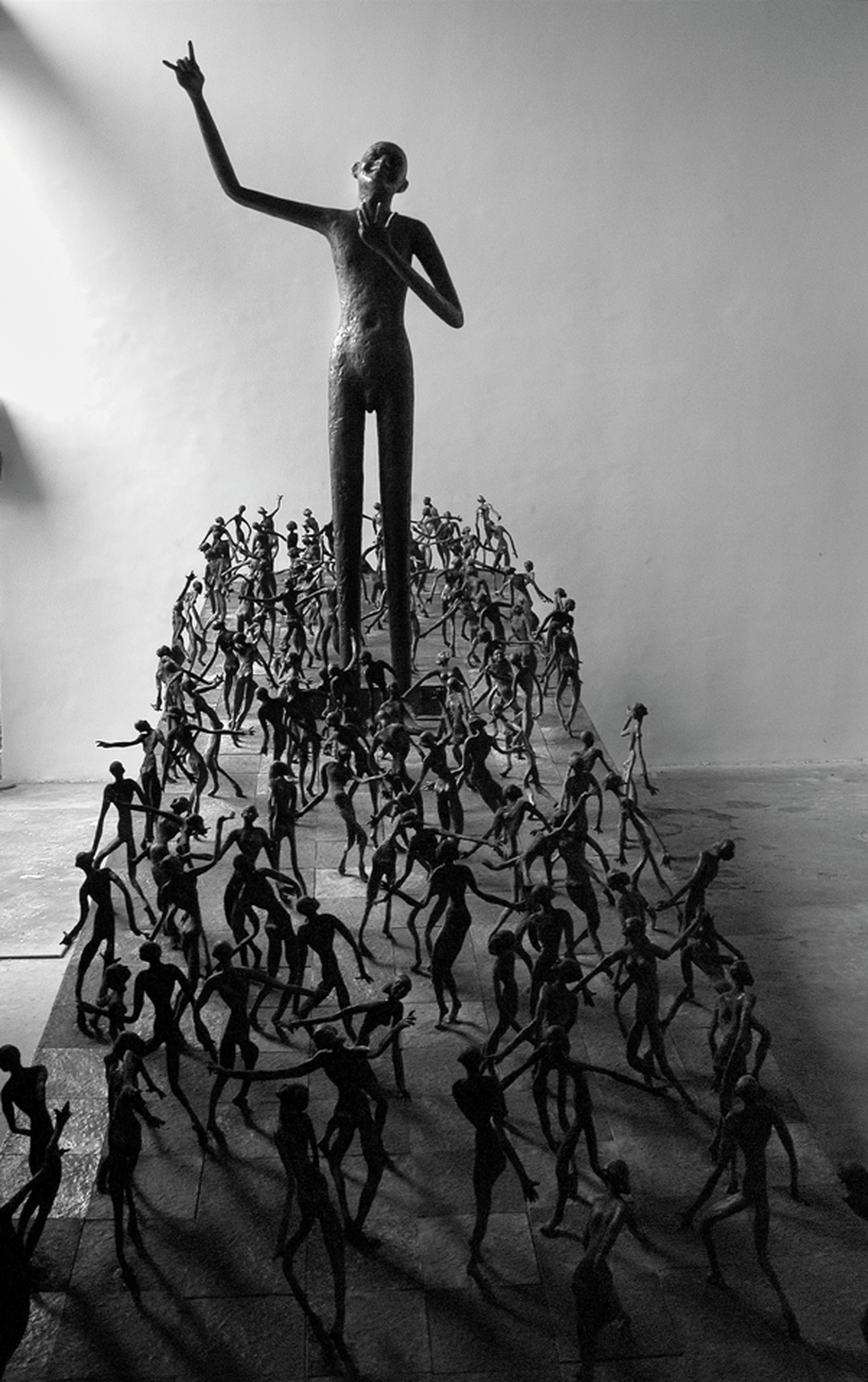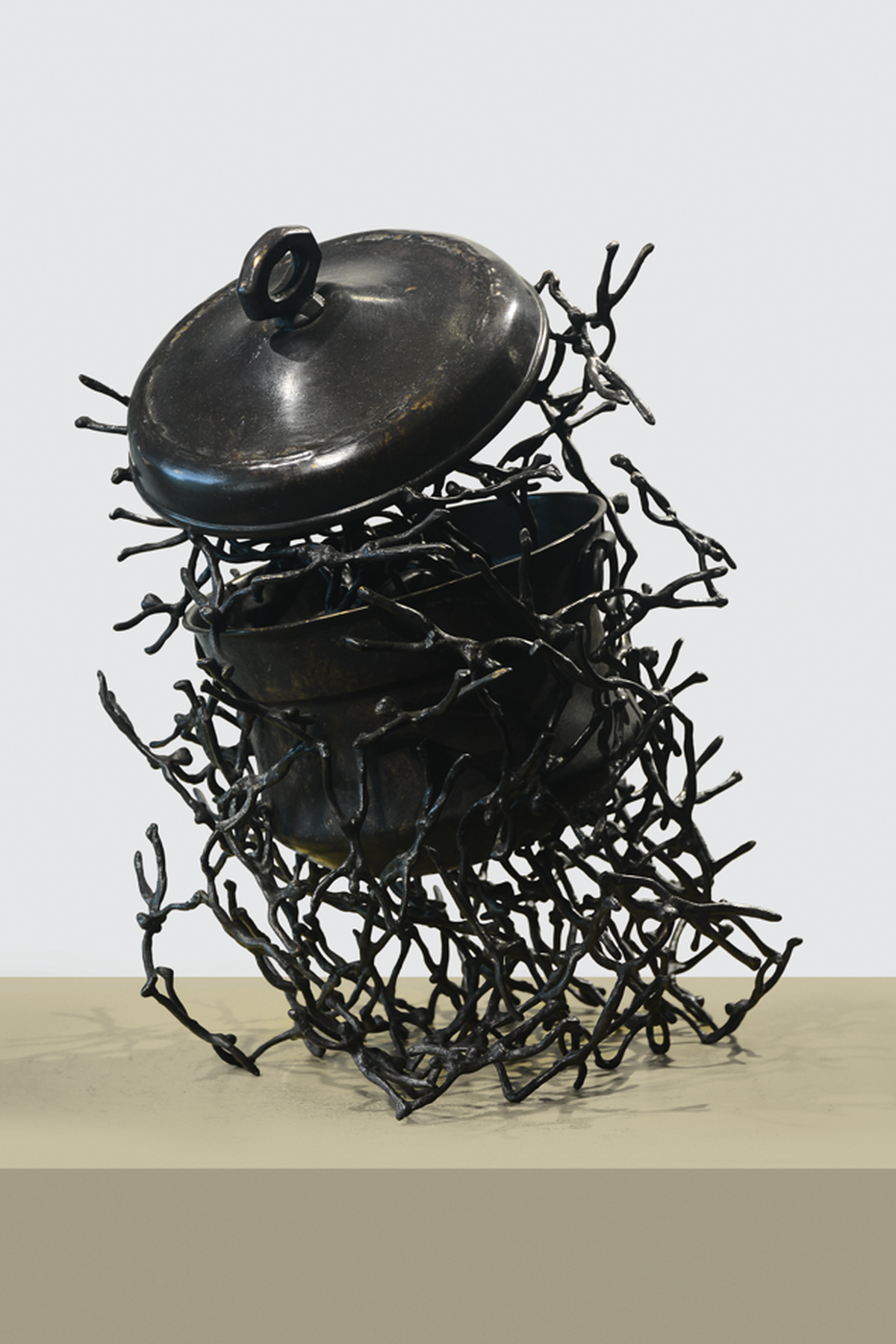K.S. Radhakrishnan’s The Crowd (2021)
K.S. Radhakrishnan, 67, still remembers the day he met Musui. It was during his third year at Visva-Bharati, Santiniketan, and the young Santhal boy — with overgrown hair and a disarming smile — asked him for bread. “It was probably one of the most exceptional expressions I’d seen, and I was drawn to it. I asked him to hop onto my cycle and I took him to my studio to model for me,” recalls the figurative sculptor. “I gave him some coins and he went to a barbershop and came back with a shaved head. That was when a sculpture was born.”
Over the years, the public has seen the smiling boy with the bald head in different avatars: as a rickshaw puller, writer, imp and saint. If you visit Mananchira ground in Kozhikode, you will spot Kalapravaham, an open-air sculpture of Musui levitating from a granite base, his torso arching back and his legs in the air. In Panjim, Goa, near the Mandovi river, he is perched on a padippura, an arched gateway typical of traditional Kerala architecture, welcoming travellers to the city.

Freehold Musui (2008)
This weekend, photographs of these public works, along with sculptures from various decades, will be showcased at Bikaner House in Delhi, at On The Open Road, the first-ever retrospective of the eminent sculptor. “He belongs to a trio of sculptors — along with Ravinder Reddy and Dhruva Mistry — who breathed fresh energy into the modern Indian art scene. Radhakrishnan has sustained it for five decades and expanded it remarkably, bringing to it an awareness of world art and invoking human stories that appeal to all,” says curator and art historian R. Siva Kumar. “Since I have known him from our student years, the exhibition is shaped by an ongoing dialogue between us, and brings together the shifting focuses and high points of his journey so far.”
The Crowd comes to Bikaner
Bronze is Radhakrishnan’s preferred medium, as it gives strength and lightness to his “airbound figures” with their supple spines and long limbs. “They express the kind of flexibility and plasticity of our own minds,” says Radhakrishnan, whose preference for modelling and bronze casting (over newer materials) sets him apart from other Indian sculptors.
K.S. Radhakrishnan, the man with the bronze touch
He credits his teachers, Ramkinkar Baij, the father of modern Indian sculpture, Somnath Hore and Sarbari Roy Choudhury in playing a huge role in his decision to pick up a hammer instead of a brush. His desire to bring art to the public is also inspired by Baij — whose open air sculptures abound in Santiniketan. “Rabindranath Tagore [who founded Visva-Bharati] used to tell him the whole space is open for you. ‘Just fill it up, the space is yours,’ he would say.”
Visitors can witness this at the exhibition, where one of his recent works The Crowd, an installation of 50 six-foot-tall sculptures inspired by migrant labourers of Delhi — which captures the humanist that he is — is on exhibit. “It’s an inviting crowd, unlike one without a brain,” he says. “This crowd is a fearless one. Everybody is on a ramp, one leg is always up, wanting to be elevated from where they are. There is a liminality there, reaching out to a space that we want to explore intellectually and emotionally.”

The Ramp (Musui as Saint, 2004)

Song of the Idli Maker (2018)
‘People fascinate me’
Commenting on the art market today, Kumar says it has become far more friendly than it was for artists such as Ramkinkar Baij. “The lack of finances not only deterred artists like Ramkinkar from casting, but also from undertaking many large projects that he wanted to do,” he points out, while Radhakrishnan adds that he only accepts patrons who value his creative freedom. “If a patron wants to support what I do, I don’t mind. But if a patron wants to support me to do something that they want to do, then I am not for them.”
His next works will see Radhakrishnan experimenting with different sizes, but one thing will remain constant. “I only work with people,” he stresses. “[None of my work is] abstract sculptures. I deal with real people. They continue to fascinate me.”
The exhibition by Gallerie Nvyā is on from November 19 to December 14 at Bikaner House.
The writer is a theatre artiste based in Thrissur.